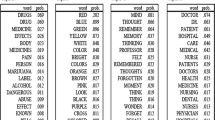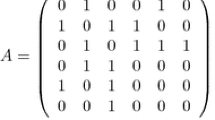Abstract.
We present a framework for automatically decomposing (“block-modeling”) the functional classes of agents within a complex network. These classes are represented by the nodes of an image graph (“block model”) depicting the main patterns of connectivity and thus functional roles in the network. Using a first principles approach, we derive a measure for the fit of a network to any given image graph allowing objective hypothesis testing. From the properties of an optimal fit, we derive how to find the best fitting image graph directly from the network and present a criterion to avoid overfitting. The method can handle both two-mode and one-mode data, directed and undirected as well as weighted networks and allows for different types of links to be dealt with simultaneously. It is non-parametric and computationally efficient. The concepts of structural equivalence and modularity are found as special cases of our approach. We apply our method to the world trade network and analyze the roles individual countries play in the global economy.
Similar content being viewed by others
References
S.P. Borgatti, M.G. Everett, Sociological Methodology 22, 1 (1992)
S. Wasserman, K. Faust, Social Network Analysis (Cambridge University Press, Cambridge 1994)
M.E.J. Newman, SIAM Rev. 45, 167 (2003)
H. Jeong, B. Tombor, R. Albert, Z.N. Oltvai, A.-L. Barabási, Nature 407, 651 (2000)
A.-L. Barabási, Z.N. Oltvai, Nat. Rev. Genet. 5, 101 (2004)
H. Jeong, S. Mason, A.-L. Barabási, Z.N. Oltvai, Nature 41, 41 (2001)
M. Girvan, M.E.J. Newman, Proc. Natl. Acad. Sci. USA 99, 7821 (2002)
R. Guimera, L.A.N. Amaral, Nature 433, 895 (2005)
R. Guimera, M. Sales-Pardo, L.A.N. Amaral, Nature Phys. 3, 63 (2007)
D.M. Wilkinson, B.A. Huberman, Proc. Natl. Acad. Sci. USA 101, 5241 (2003)
G. Palla, I. Derény, I. Farkas, T. Viscek, Nature 435, 814 (2005)
J. Reichardt, S. Bornholdt, J. Stat. Mech., P06016 (2007)
F. Lorrain, H.C. White, J. Math. Sociol. 1, 49 (1971)
D.R. White, K.P. Reitz, Soc. Netw. 5, 193 (1983)
M.G. Everett, S.P. Borgatti, J. Math. Sociol. 19, 29 (1994)
P. Doreian, V. Batagelj, A. Ferligoj, Generalized Blockmodeling (Cambridge University Press, New York, 2005)
M.E.J. Newman, M. Girvan, Phys. Rev. E 69, 066133 (2004)
J. Reichardt, S. Bornholdt, Phys. Rev. Lett. 93, 218701 (2004)
J. Reichardt, S. Bornholdt, Phys. Rev. E 74, 016110 (2006)
P. Doreian, V. Batagelj, A. Ferligoj, Soc. Netw. 26, 29 (2004)
A. Žiberna, Soc. Netw. 29, 105 (2007)
M. Mahutga, Soc. Forces 84(4), 1863 (2006)
D.A. Smith, D.R. White, Soc. Forces 70(4), 857 (1992)
R. Nemeth, D. Smith, Int. Studies Quar. 32(3) (1988)
M.E.J. Newman, E.A. Leicht, Proc. Natl. Acad. Sci. USA 104(23), 9564 (2007)
M. Rosvall, C.T. Bergstrom, Proc. Natl. Acad. Sci. USA 104(18), 7327 (2007)
C. Kemp, T.L. Griffiths, J.B. Tenenbaum, MIT AI Memo (2004)
C. Kemp, J.B. Tenenbaum, T.L. Griffiths, T. Yamada, N. Ueda, in The Proceedings of the Twenty-First National Conference on Artificial Intelligence (AAAI '06) (Boston, MA, 2006)
K. Nowicki, T.A.B. Snijders, J. Am. Stat. Assoc. 96(455), 1077 (2001)
S. Wasserman, C. Anderson, Soc. Netw. 9, 1 (1987)
Author information
Authors and Affiliations
Corresponding author
Rights and permissions
About this article
Cite this article
Reichardt, J., White, D. Role models for complex networks. Eur. Phys. J. B 60, 217–224 (2007). https://doi.org/10.1140/epjb/e2007-00340-y
Received:
Published:
Issue Date:
DOI: https://doi.org/10.1140/epjb/e2007-00340-y




